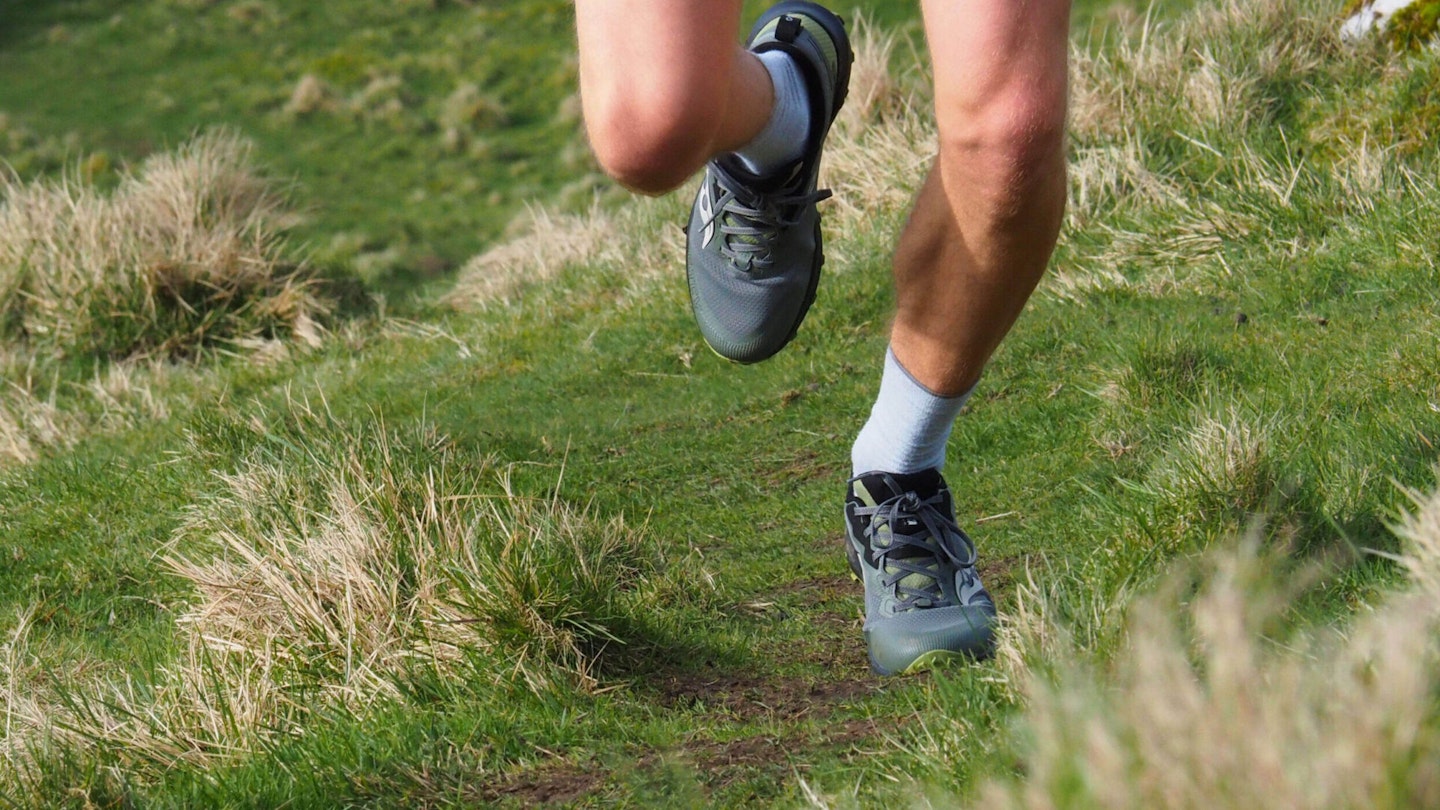As an all-round trail running shoe the Saucony Peregrine has long been a favourite of ours and a great many trail runners.
The Peregrine 13 was our absolute favourite of all the iterations of the shoe. It was very lightweight, incredibly comfy, and highly capable over almost any terrain. That’s great for the Peregrine 13 but it poses a challenge for its successor: how to improve?
It appears that Saucony has come to the conclusion that you don’t try and fix what isn’t broken, so the Peregrine 14 and 13 are remarkably similar on paper. But is there any difference on the trails? We’ve been investigating.
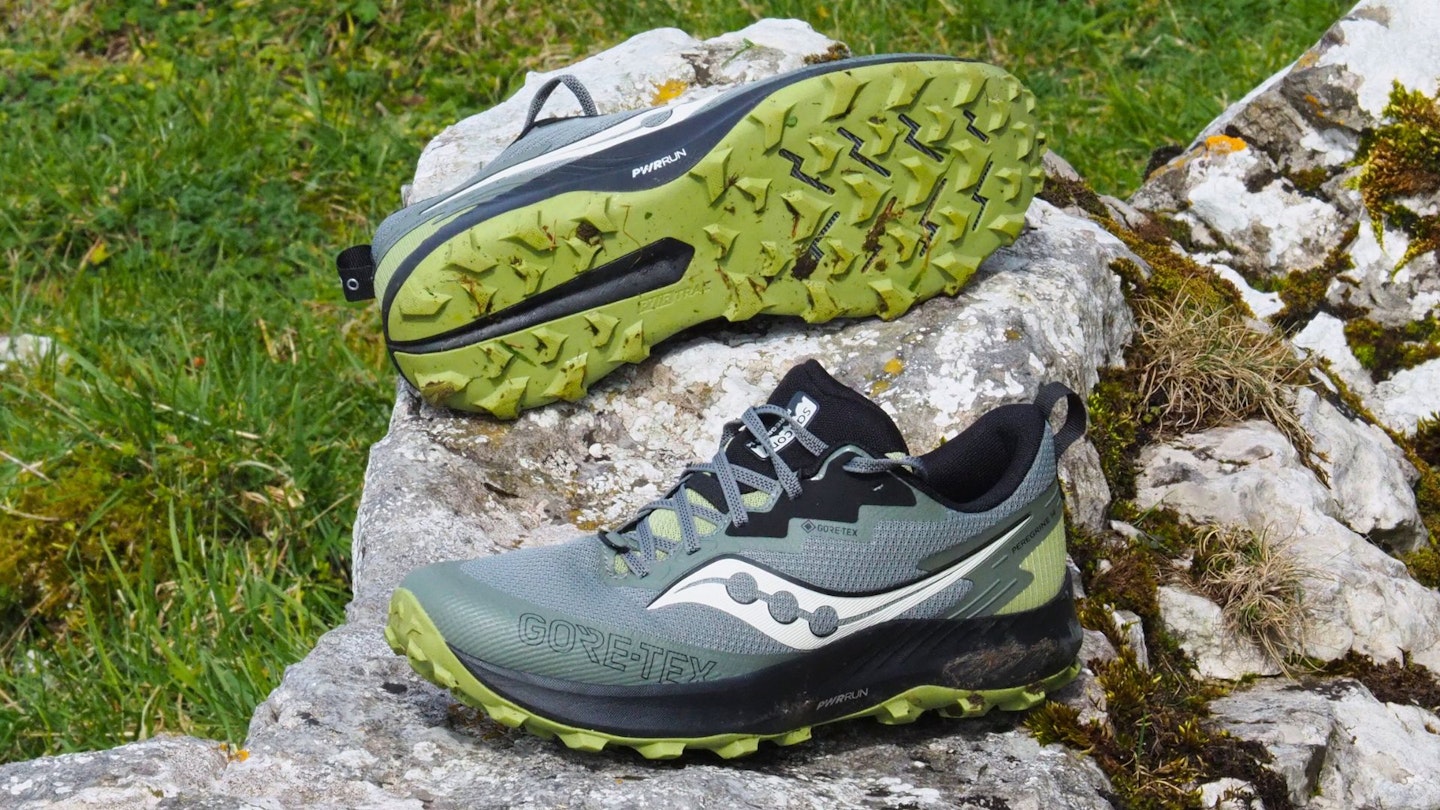 LFTO
LFTOwww.saucony.com
Pros
- Excellent fit and comfort
- Impressive all-terrain grip
- Reasonably lightweight
Cons
- Poor eco credentials
| Men's sizes | UK 6 - 13 |
| Women's sizes | UK 3 - 10 |
| Waterproof version? | Yes |
| Weight | 300g |
| Drop | 4mm |
| Stack height | 28mm/24mm |
| Lug depth | 5mm |
Design and features

There’s no ignoring the fact that the outsole and midsole of the Peregrine 14 are exactly the same as its predecessor. The outsole is Saucony’s own tread with 5mm lugs, connected to a PWRRUN foam midsole with a 4mm drop (28mm/24mm stack height).
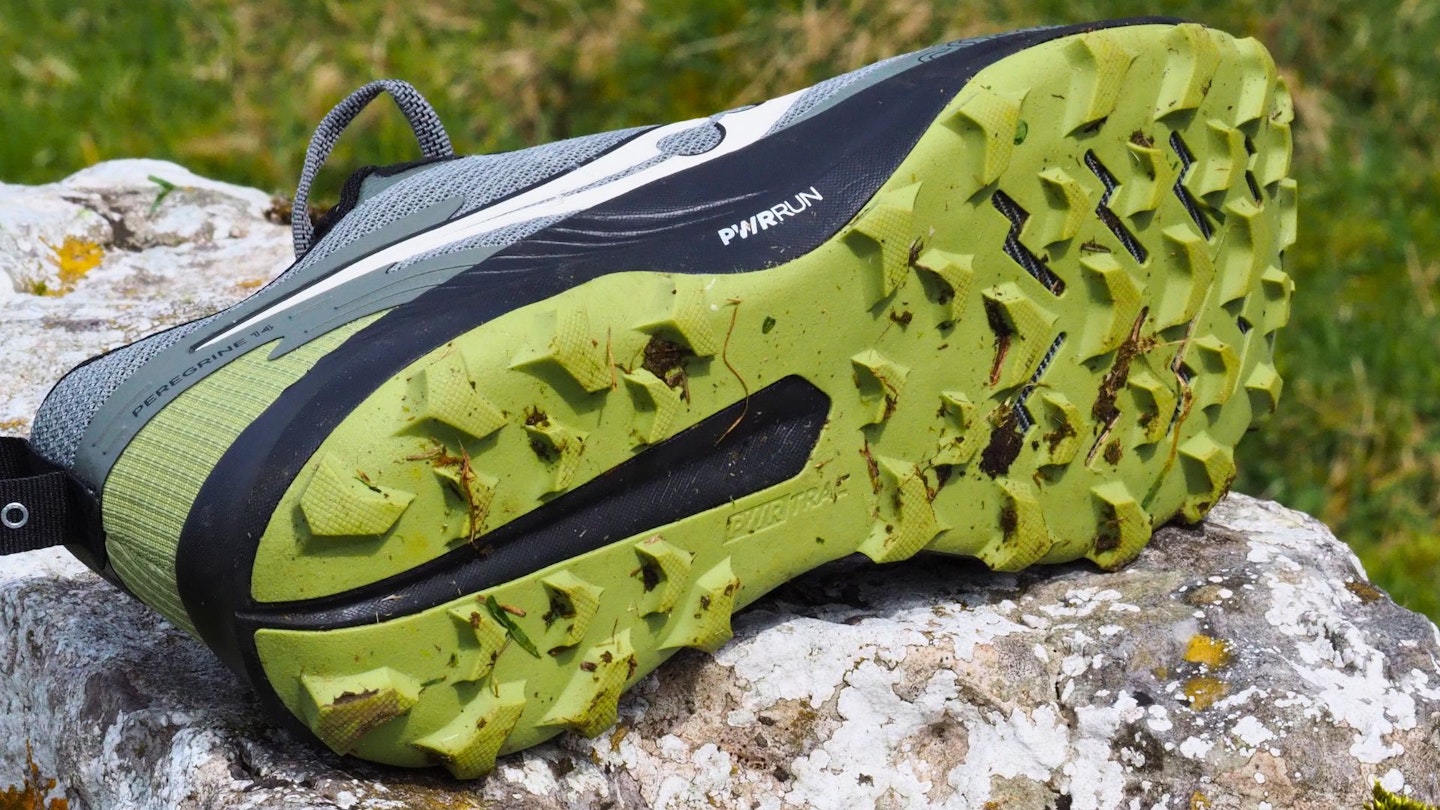
The upper, however, is a little tweaked. It gets a new lick of paint and a more generous covering of TPU around the toe and forefoot to help fend off abrasion a little better.
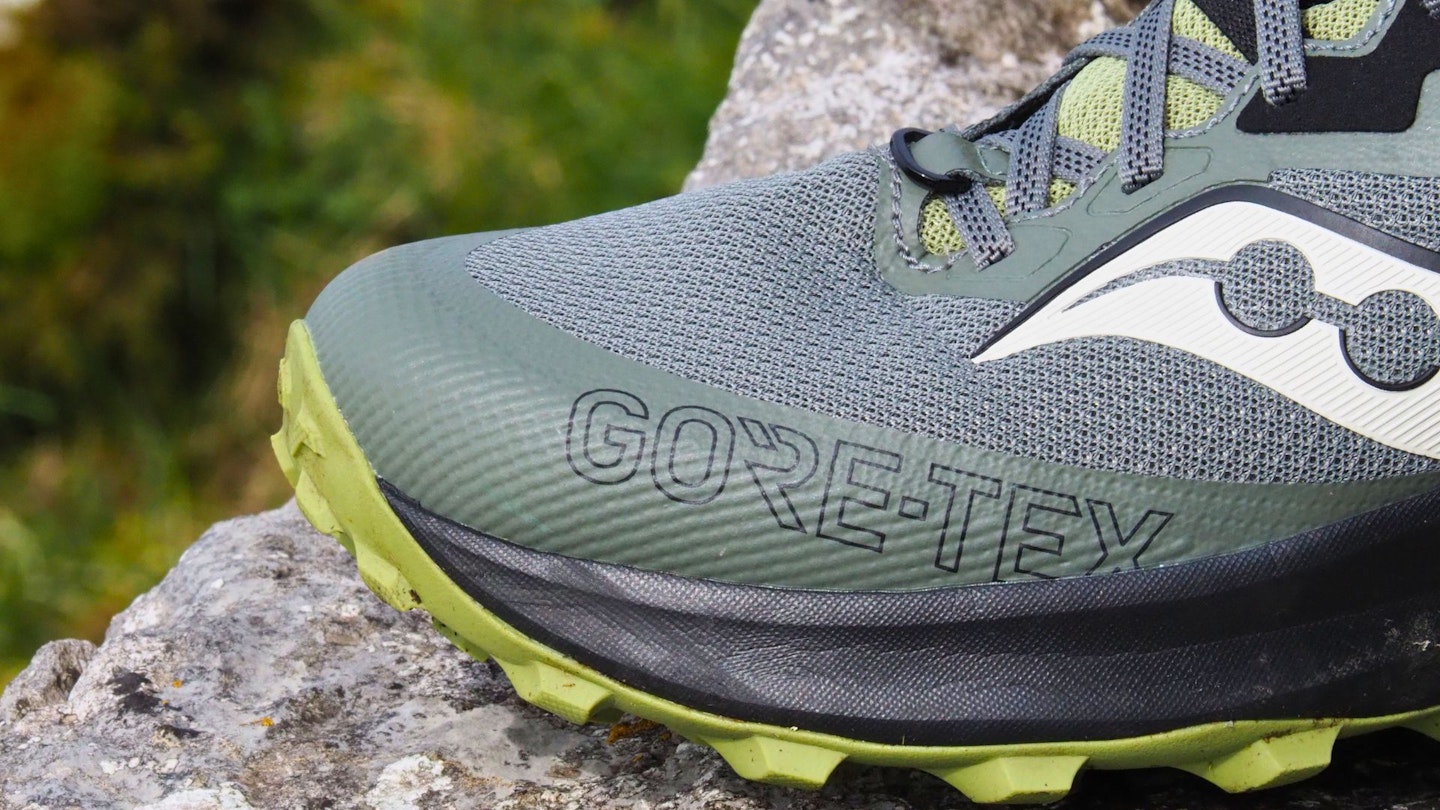
The Peregrine 14, like the 13 before it, can be had with or without a Gore-Tex Invisible Fit lining for waterproofing. But the ‘ST’ model of the Peregrine 13 – the soft terrain version with larger lugs and a gaiter – doesn't seem to have continued.
Performance and comfort
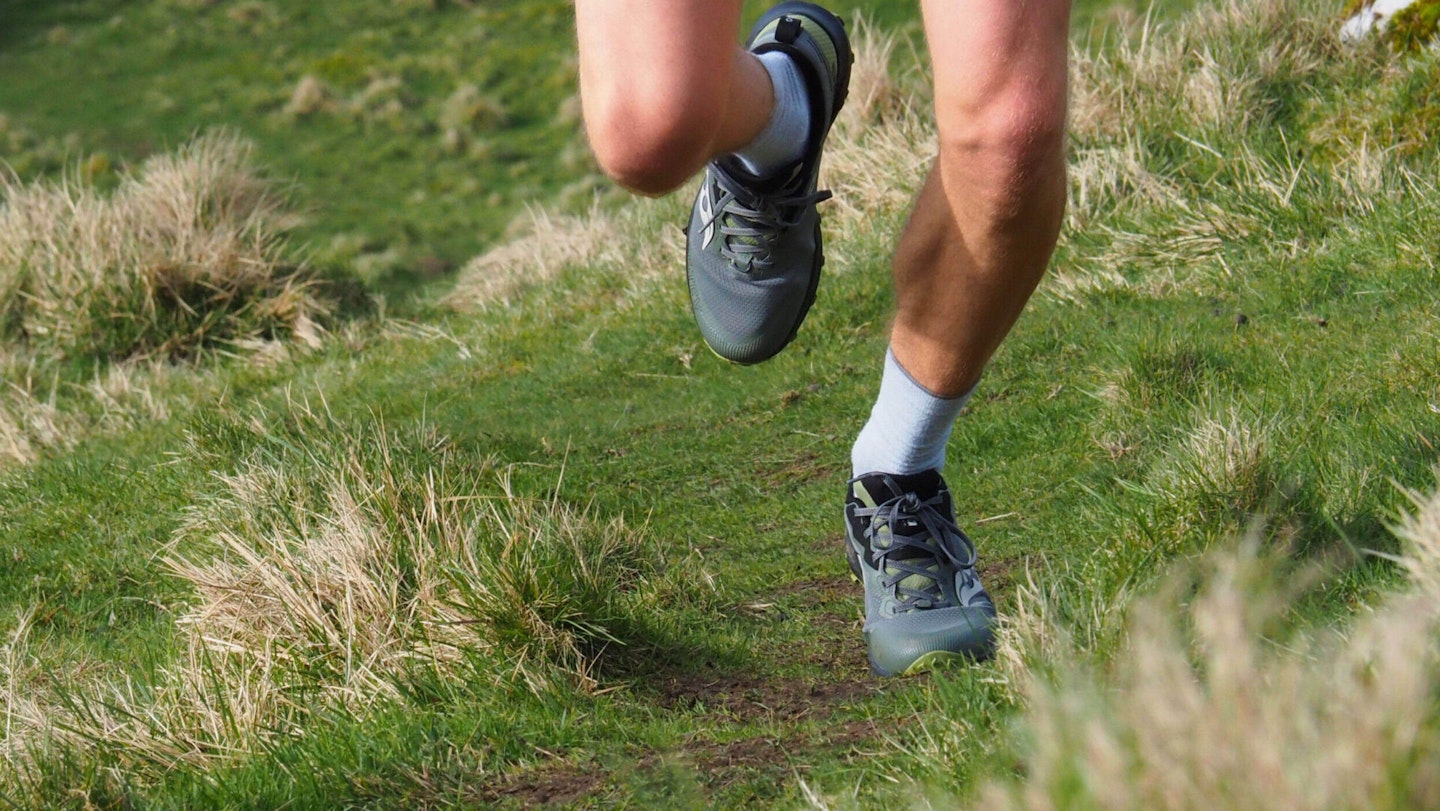
Saucony was wise not to tamper with its winning, honed recipe for the Peregrine. The Peregrine 14 fits really well, with more width at the forefoot and toes than many trail running shoes and a confident hold at the heel.
We tested the GTX version and the use of Gore-Tex Invisible Fit is a great idea. It makes the upper of the shoe a lot lighter and more flexy than standard Gore-Tex. Breathability still isn’t on par with non-waterproof shoes – but luckily Saucony has you covered there. The standard Peregrine 14 is our favourite version because it’s lighter and far more breathable.

All-terrain grip is one of the Saucony Peregrine’s best traits and we were pleased, if not unsurprised, the Peregrine 14 still possesses that desirable hereditary characteristic. The PWRTRAC outsole really is capable of handling wet and dry terrain – those 5mm lugs are spaced wide enough apart and are deep enough to shed mud while being large enough to give you lots of contact on harder surfaces.
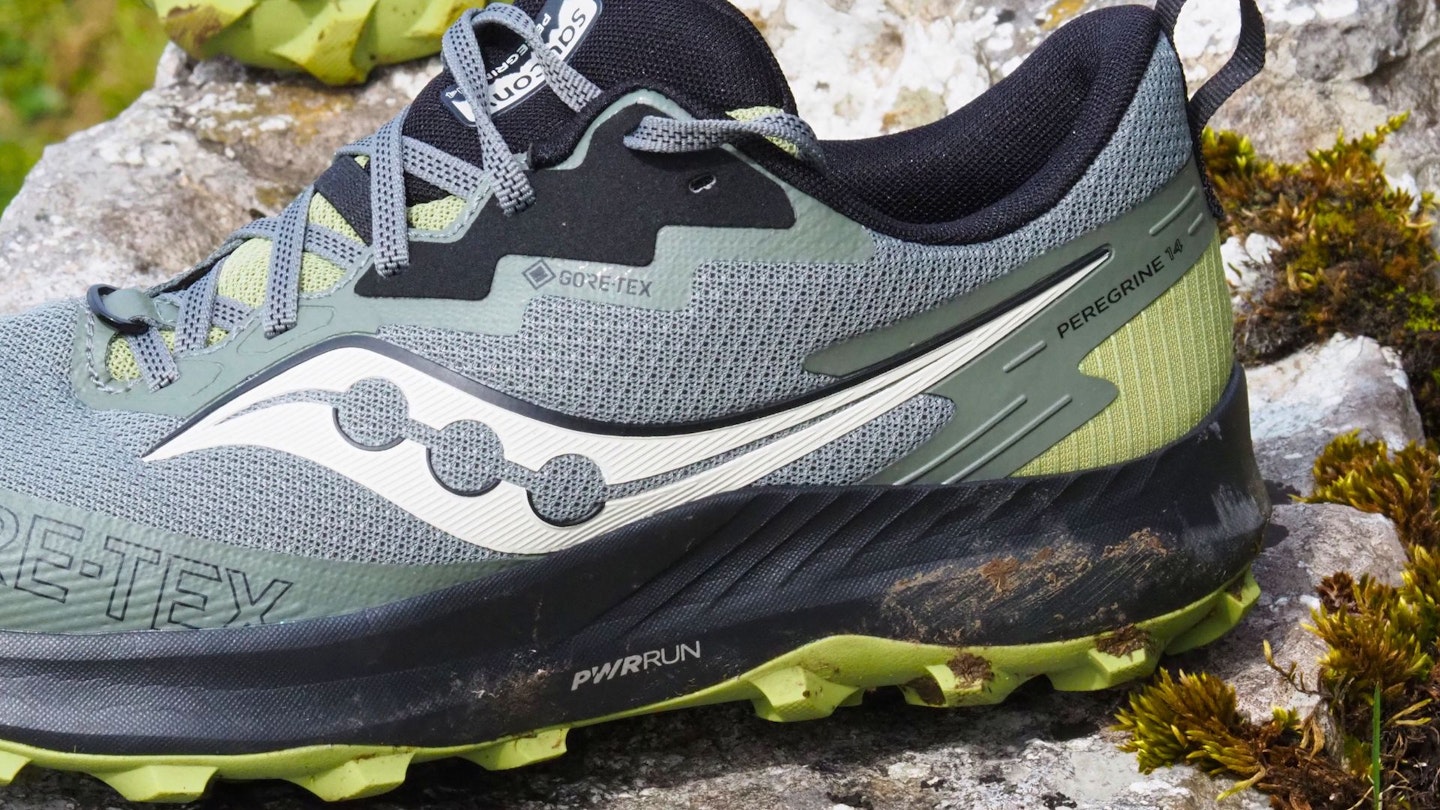
Underfoot, the midsole is nicely cushioned but balances this with response. The stack height is generous but not over the top like you get on some hybrid/road-to-trail shoes. This, in addition to a great fit and low weight (circa 300g for the GTX and 270g for the non-GTX versions), meant we felt agile yet stable and confident in these shoes.
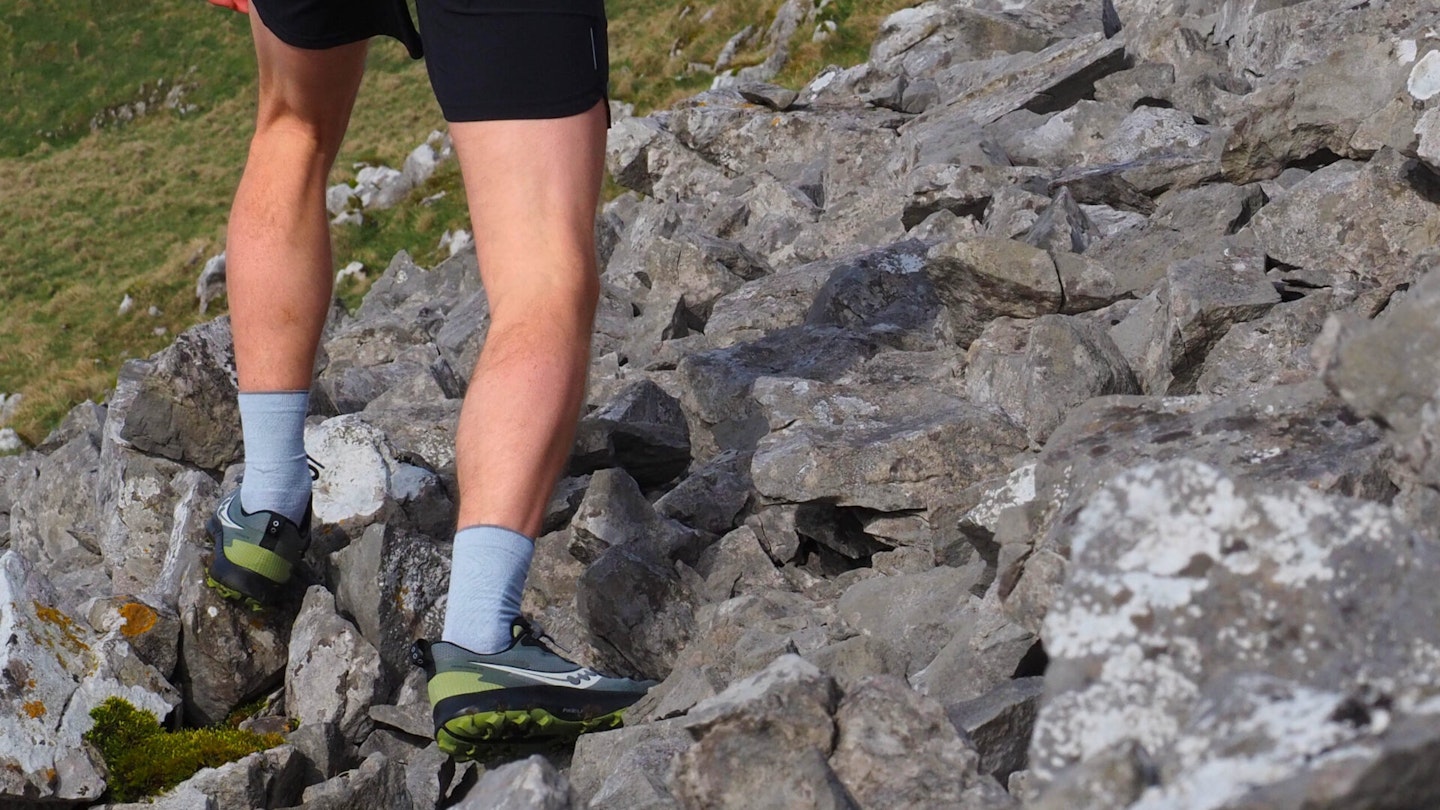
Sustainability
Sustainability is a major challenge for running shoes. Their lightweight construction and reliance on synthetic materials mean they head to landfill at an upsetting rate.
What to do? Some brands like Allbirds and UYN are working with natural materials to create high performance footwear. We’ve tried a pair of Allbirds trail running shoes and they show it is certainly possible.
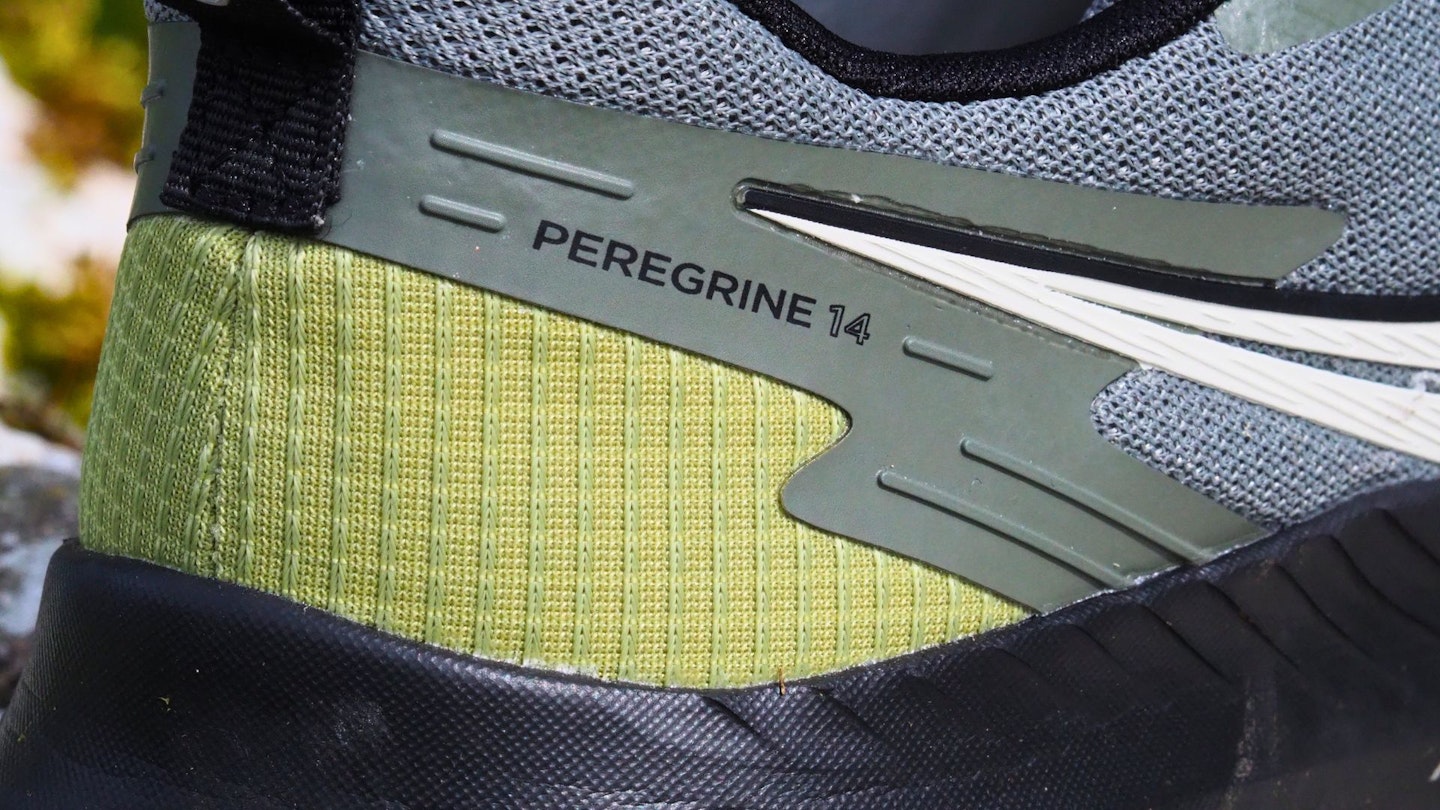
Does the Saucony Peregrine 14 have much to offer in terms of sustainability? Sadly not. Saucony is owned by a conglomerate called Wolverine Worldwide. In its latest available Global Impact Report it talks about bio and algae-based materials, recycled rubber, and recycled EVA, but there is no mention of the use of any of these to make the Peregrine 14.
Price and competition
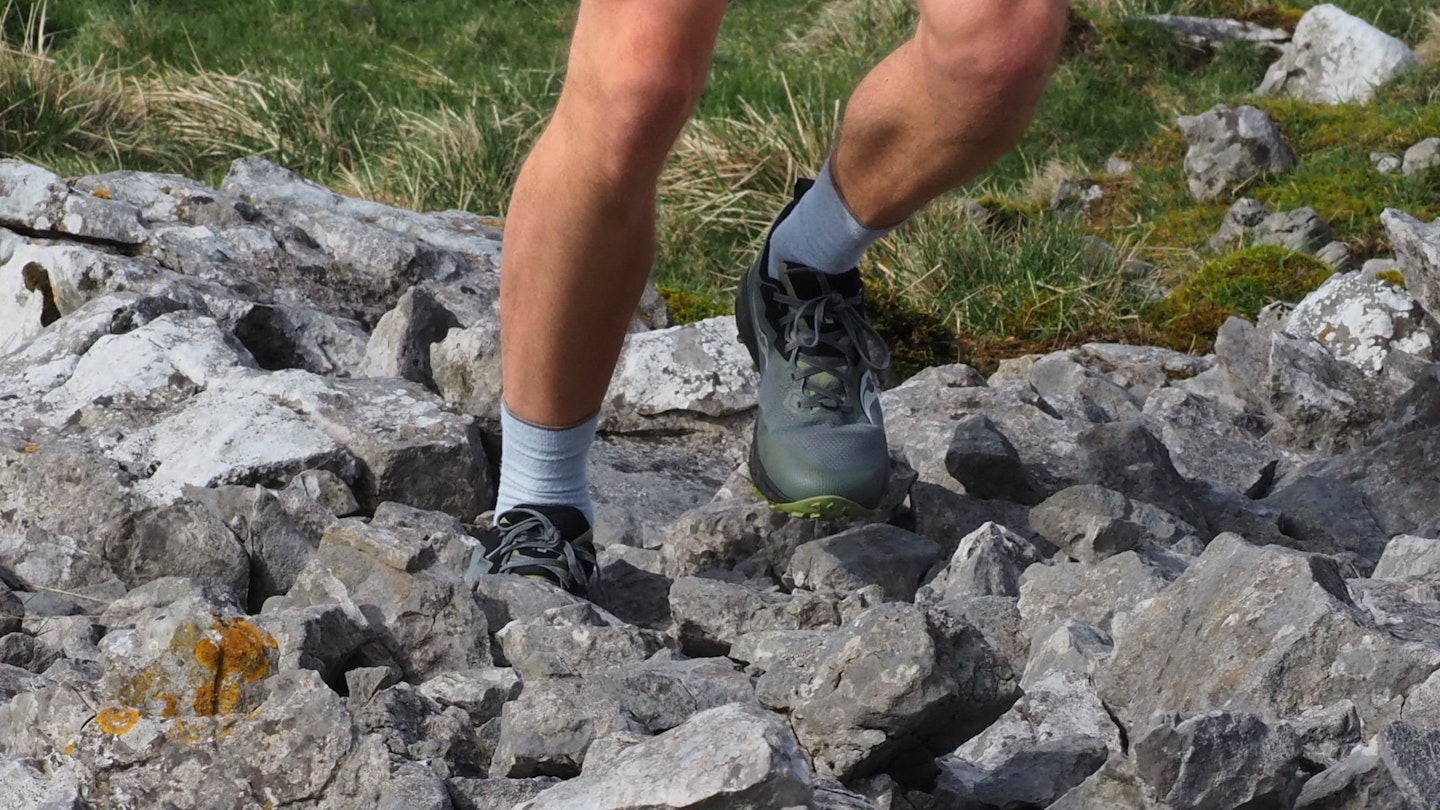
At the time of writing, the Peregrine 14 costs £135 and the 14 GTX costs £155. That’s pretty standard for high performing trail running shoes like these.
The Merrell Agility Peak 5 – another shoe from Wolverine Worldwide – is a direct competitor to the Peregrine 14. It costs about the same and has a lot of similar attributes. We’ve tested it and have been hard pressed to pick a winner of the two.
But here’s a tip: since the Peregrine 14 is so similar to its predecessor, you could save yourself quite a bit of money and go for the Peregrine 13, which is widely available at a heavily discounted price.
Verdict
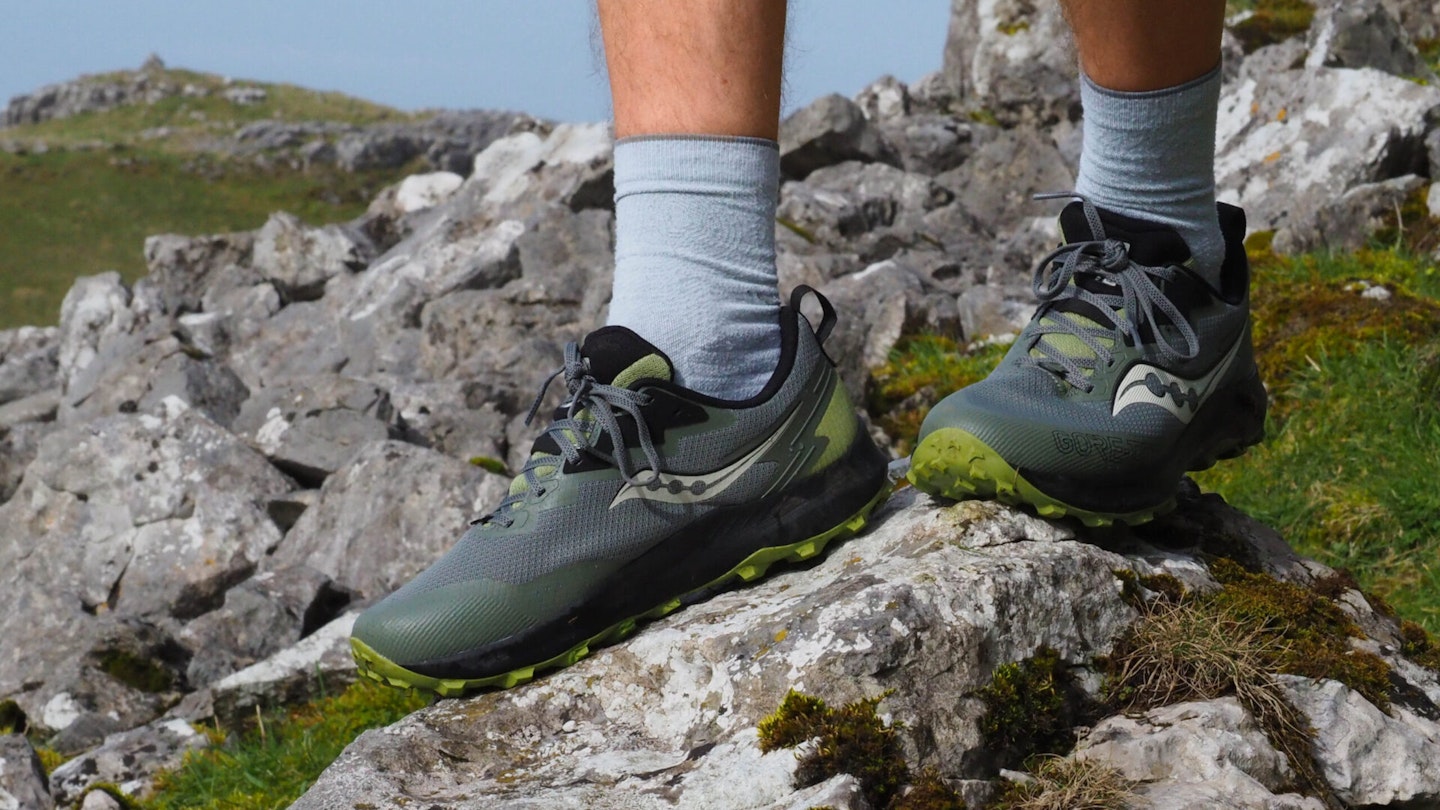
The Saucony Peregrine 14 is a great trail running shoe because it so closely resembles the shoe it replaces. That’s a pro and a con. Pro because it means the Peregrine 14 is superb; con because, while stocks last, why not just buy the Peregrine 13 for an awful lot less?
How we tested
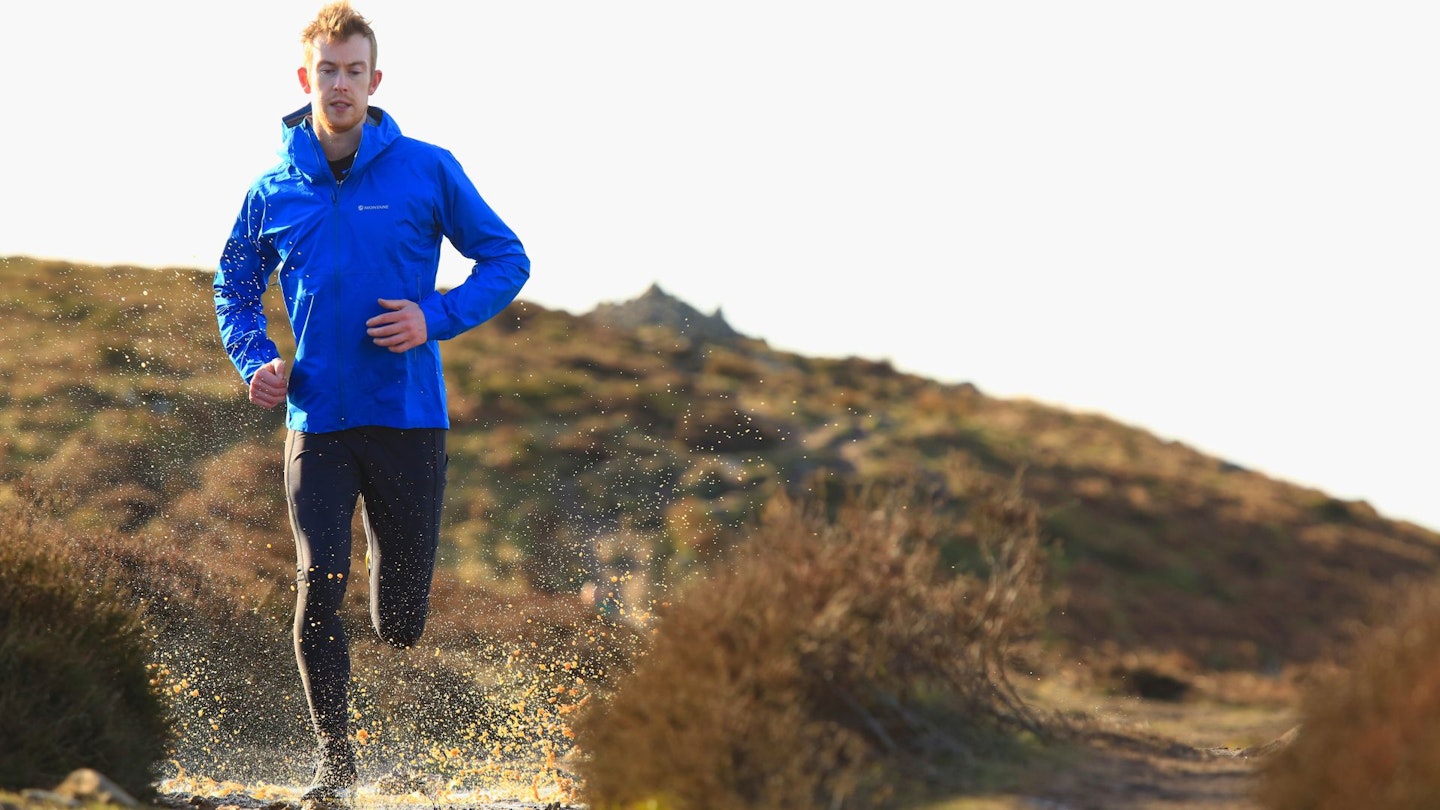
The Saucony Peregrine 14 GTX was tested by Chris Williams, who is one of our staff writers and gear testers, in late winter and early spring, primarily in the Yorkshire Dales.
Chris has been with us since 2021 and has several years of journalistic and outdoor industry experience.
